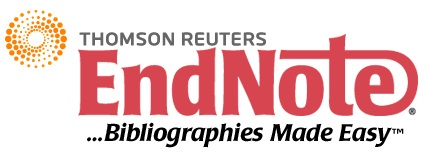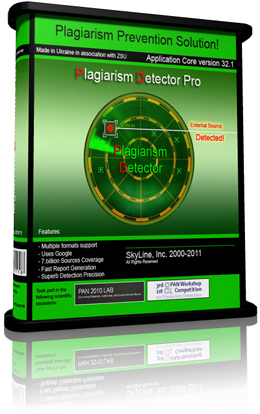Development of Digital Comic Strip Media in Indonesian Language Learning to Enhance Critical Thinking Skills
DOI:
https://doi.org/10.29407/jpdn.v11i1.25397Keywords:
Comic Strips, Digital Based, Indonesian Language Learning, Critical Thinking SkillsAbstract
This research is motivated by initial findings from interviews with teachers and students. The aims of this study are as follows: 1) to explore the design of developing digital-based comic strip media, 2) to assess the feasibility of digital-based comic strip media and 3) to evaluate the effectiveness of digital-based comic strip media. The method used is Research and Development (RnD). There are five stages of development in the RnD method based on the ADDIE model: analysis, design, development, implementation and evaluation. The results of the validation tests showed that the digital-based comic strip media received an 80% rating in the media expert validation test, categorizing it as feasible. In the language expert validation test, it received a 94% rating, categorizing it as very feasible and in the material expert validation test, it also received a 94% rating, categorizing it as very feasible. Furthermore, the digital-based comic strip media in indonesian language learning has proven effective in improving students' critical thinking skills, as demonstrated by the N-Gain test, which yielded an average score of 0.87 and an average percentage of 87.48. Therefore, digital-based comic strip media is deemed feasible for implementation and effective in enhancing students' critical thinking skills.
Downloads
References
Fika, N. A., & Sukmawarti. (2022). Pengembangan Media Animasi Berbantu Powtoon Pada Pembelajaran Bahasa Indonesia. Jurnal Pendidikan Dan Pembelajaran …, 04(2), 220–231.
Herawati, V. (2020). Pengembangan Media Pembelajaran IPA dengan Menggunakan Media “Rumah Eksis” di Sekolah Dasar. Jurnal Basicedu, 5(5), 3(2), 524–532.
Laily, I. M., Astutik, A. P., & Haryanto, B. (2022). Instagram sebagai Media Pembelajaran Digital Agama Islam di Era 4.0. Munaddhomah: Jurnal Manajemen Pendidikan Islam, 3(2), 160–174.
Nurfadhillah, S. (2021). MEDIA PEMBELAJARAN Pengertian Media Pembelajaran, Landasan, Fungsi, Manfaat, Jenis Jenis Media Pembelajaran, dan Cara Penggunaan Kedudukan Media Pembelajaran. CV Jejak.
Phafiandita, A. N., Permadani, A., Pradani, A. S., & Wahyudi, M. I. (2022). Urgensi Evaluasi Pembelajaran di Kelas. JIRA: Jurnal Inovasi Dan Riset Akademik, 3(2), 111–121.
Priyo Utomo, N., & Indarto, P. (2021). Analisis Keterampilan Teknik Dasar Passing dalam Sepak Bola. Jurnal Porkes, 4(2), 87–94.
Rahman, A., Munandar, S. A., Yumriani, Fitriani, A., & Karlina, Y. (2022). Pengertian pendidikan, ilmu pendidikan dan unsur-unsur pendidikan. 2(1), 1–8.
Ritonga, A. P., Andini, N. P., & Iklmah, L. (2022). Pengembangan Bahan Ajaran Media. Jurnal Multidisiplin Dehasen (MUDE), 1(3), 343–348.
Rivandani Ihsanah, R., Purnamasari, V., & Putriyanti, L. (2023). Pengembangan Media Flashcard Berbasis Metode Silaba Dalam Membaca Permulaan Kelas I Sekolah Dasar. Didaktik : Jurnal Ilmiah PGSD FKIP Universitas Mandiri , 9(5).
Safitri, Y. E. (2023). Pengembangan Media Komik Strip Digital Berbasis Problem Based Learning Untuk Meningkatkan Kemampuan Berpikir Kritis Ipa. Joyful Learning Journal, 12(2), 92–98.
Simbolon, R. W., Siallagan, S., Munte, E. D., & Barus, B. (2022). Desain Poster Menarik Memanfaatkan Canva. BERNAS: Jurnal Pengabdian Kepada Masyarakat, 3(3), 449.
Sugiyono. (2013). Metode Penelitian Kuantitatif, Kualitatif dan R&D.
Susanti, S., Aminah, F., Assa’idah, I. M., Aulia, M. W., & Tania Angelika. (2024). Dampak Negatif Metode Pengajaran Monoton Terhadap Motivasi Belajar Siswa. 2(2), 86–93.
Yuliantaningrum, L., Sunarti, T., Fisika, J., & Surabaya, U. N. (2020). Pengembangan Instrumen Soal Hots Untuk Mengukur Keterampilan Berpikir Kritis, Berpikir Kreatif, Dan Pemecahan Masalah Materi Gerak Lurus Pada Peserta Didik Sma. 09(02), 76–82.
Yuniar, R. H., & Umami, N. R. (2023). Implementasi Pembelajaran Kurikulum Merdeka Smp Negeri 1 Rejotangan. ARMADA : Jurnal Penelitian Multidisiplin, 1(8), 786–795.
Downloads
Published
Issue
Section
License
Copyright (c) 2025 Annisa Thalia Abdullah, Idah Faridah Laily , Moh. Masnun (Author)

This work is licensed under a Creative Commons Attribution-ShareAlike 4.0 International License.
Authors who publish with this journal agree to the following terms:
- Copyright on any article is retained by the author(s).
- The author grants the journal, the right of first publication with the work simultaneously licensed under a Creative Commons Attribution License that allows others to share the work with an acknowledgment of the work’s authorship and initial publication in this journal.
- Authors are able to enter into separate, additional contractual arrangements for the non-exclusive distribution of the journal’s published version of the work (e.g., post it to an institutional repository or publish it in a book), with an acknowledgment of its initial publication in this journal.
- Authors are permitted and encouraged to post their work online (e.g., in institutional repositories or on their website) prior to and during the submission process, as it can lead to productive exchanges, as well as earlier and greater citation of published work.
- The article and any associated published material is distributed under the Creative Commons Attribution-ShareAlike 4.0 International License
































